holoscience.com | The ELECTRIC UNIVERSE®
A sound cosmology for the 21st century
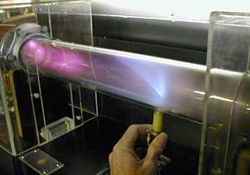
The Balloon goes up over lightning!
![]() In August 2001 a high-altitude balloon was sent aloft to ride far above the great storms of the mid-west USA. Researchers had sent the balloon, like a Dark Rider out of Tolkien, riding into the moonless night, seeking sprites, gnomes and the ring of the elves.
In August 2001 a high-altitude balloon was sent aloft to ride far above the great storms of the mid-west USA. Researchers had sent the balloon, like a Dark Rider out of Tolkien, riding into the moonless night, seeking sprites, gnomes and the ring of the elves.
<< Gnomes, sprites and elves stretch into space above powerful thunderstorms. Their fanciful names may reflect the fact that airline pilots reported them but for many years no one would believe them.
 Surprisingly, in the 1920s, the Scottish physicist C. T. R. Wilson predicted the existence of brief flashes of light high above large thunderstorms. Almost 70 years later, Bernard Vonnegut of SUNY Albany realized that evidence for Wilson’s then-unconfirmed predictions might appear in video imagery of Earth’s upper atmosphere, recorded by space shuttle astronauts. He encouraged NASA’s William Boeck and Otha Vaughan to look for evidence. Their search was successful. At the 1990 fall meeting of the American Geophysical Union, Boeck and Vaughan presented evidence for upper-atmosphere flashes. Evidence of a different nature came from the University of Minnesota’s John Winckler and his colleagues, who had serendipitously observed a flash in moonless night skies over Minnesota in 1989.
Surprisingly, in the 1920s, the Scottish physicist C. T. R. Wilson predicted the existence of brief flashes of light high above large thunderstorms. Almost 70 years later, Bernard Vonnegut of SUNY Albany realized that evidence for Wilson’s then-unconfirmed predictions might appear in video imagery of Earth’s upper atmosphere, recorded by space shuttle astronauts. He encouraged NASA’s William Boeck and Otha Vaughan to look for evidence. Their search was successful. At the 1990 fall meeting of the American Geophysical Union, Boeck and Vaughan presented evidence for upper-atmosphere flashes. Evidence of a different nature came from the University of Minnesota’s John Winckler and his colleagues, who had serendipitously observed a flash in moonless night skies over Minnesota in 1989.

Few direct measurements have been made of the flashes, dubbed “sprites” by Davis Sentman of the University of Alaska Fairbanks. Sentman chose the name “sprites” for the red flashes because, like woodland elves, they can only be seen out of the corner of your eye. The thin air of the mesosphere where the sprites appear is too high for research aircraft to fly and too low for orbiting spacecraft to access, so most of what is known comes from low-light video cameras and electromagnetic sensors based in mountain-top labs. Prof. Edgar Bering, a physicist at the University of Houston in Texas, has recently changed that. He heads a team from NASA’s National Scientific Balloon Facility to study sprites by the tricky business of flying a high-altitude balloon above major thunderstorms.
Adapted from Rider on the Storm by Harriet Williams, New Scientist Vol. 172 No. 2321, 15 December 2001
After more than a decade of disagreement, atmospheric physicists think they are finally close to agreeing on how sprites form. Bering’s balloon offers one of the first real chances to confirm their theories. But it seems a storm is brewing that threatens to set Bering against his colleagues. What little information we have has led to a model of sprite formation that many in this close-knit community of investigators now agree on. It depends on intense but short-lived electric fields created in the atmosphere by lightning discharge.
How a sprite is formed
Although most lightning originates in the negative charges at the bottom of storm clouds, roughly 1 in every 5 lightning strikes originate in the positive charges near the cloud tops. This results in an energetic positive cloud-to-ground discharge, in which the positive charge is neutralized by an upwards flow of electrons from the ground. The negative charges left in the lower part of the cloud set up what physicists call a “quasi-electrostatic field”- an intense electric field that extends high into the atmosphere above the storm.
“There is absolutely no question in my mind,” says Umran Inan, director of the Space, Telecommunications and Radioscience Lab at Stanford University. “Sprites are caused by QE fields.”
The sprite lies above horizontal (so-called spider) lightning in the lower portion of the upper stratiform cloud. The spider lightning’s large horizontal extent shows the size of the large layer of electric charge that feeds the positive ground flashes. Such lightning flashes are not generally seen in ordinary isolated thunderclouds.
Other unanswered questions remain. The extraordinarily rapid initial growth of sprites is not well understood. Nor is the pronounced asymmetry between the number of sprites produced by negative lightning and the number produced by positive lightning. Only two sprites have ever been clearly associated with flashes of negative cloud-to-ground lightning, whereas the number of sprites verifiably produced by more energetic positive cloud-to-ground lightning runs to thousands. Obviously, there is still much to learn.
The critical breakdown limit for air depends on its density. At very high altitudes-about 75 kilometres up-where air density is low, the QE field now exceeds the critical breakdown limit for air. Electrical breakdown occurs and molecules such as nitrogen and oxygen are ionised, releasing electrons. Under the influence of the QE field, free electrons are accelerated upwards, while positive ions accelerate down towards the ground.
Edgar Bering’s balloon flights suggest that the currents responsible for sprites may carry far more oomph than anyone had suspected. Previous estimates suggested that the sprite-inducing current carries about 3000 amperes. Bering’s data, on the other hand, puts the figure nearer 12,000 amperes. Whether this huge current could pose any direct physical danger to anyone is unknown. Airliners don’t fly in the mesosphere, but sprites can reach down into the cloud tops. And it is certainly possible that sprites could affect spacecraft, Bering suggests. Sprites are the prime suspect in the unexplained downing of a high-altitude balloon a few years ago.
Almost as quickly as it appears, the sprite fades away, disappearing completely in just a couple of milliseconds. However, the QE field is believed to last much longer. Researchers on the ground can monitor its presence using radio receivers since the field produces a continuous electromagnetic signal at frequencies from a few hertz to tens of kilohertz. The signal often persists long after the sprite has disappeared, slowly fading as charges in the cloud disperse. This electromagnetic signal, Inan and his colleagues argue, is the signature of the QE field.
But what scientists needed were direct measurements of the electric field. What could be better than information gathered by a balloon flying high above the clouds?
The team scoured the balloon flight results for the signature of a QE field-the low-frequency radio hum. But they were in for a surprise. The balloon’s instruments did not record it. The researchers realized the favoured model of sprite formation didn’t measure up.
The results from the ground stations suggest that once a positive lightning strike occurs, the intensity of the electric field in the mesosphere builds up over two or three milliseconds until breakdown occurs, and the sprite lights up. This delay may be related to the flow of currents created by the lightning which bring the high-altitude electric field to the level required for breakdown, says Victor Pasko, an atmospheric physicist at Pennsylvania State University in University Park. Then, once the sprite has faded, charges in the clouds begin to disperse or flow away, and the electric field observed from the ground decays slowly over tens of milliseconds.
However, the balloon data paints a very different picture. It implies that sprites are produced by a sudden burst of current and there is no slow build-up of the electric field. Several milliseconds after the positive lightning strike, sensors recorded a sudden upward-flowing current pulse. Just 300 microseconds later, the sprite lit up in the sky. To add to the mystery, the electric field disappeared far more rapidly than ground observations suggest, in just a few milliseconds.
Bering’s results-some of which he presented at the recent American Geophysical Union meeting in San Francisco-turns sprite theory on its head. “The charge that produces sprites is not below in the cloud, it’s in the mesosphere itself,” suggests Bering. So now there are new puzzles: where could this charge be coming from, and if there’s no QE field, what causes the delay between lightning and sprite? “We have a problem understanding why the sprite takes so long to form,” admits James Benbrook, a colleague of Bering’s in the physics department at the University of Houston.
And what of the low-frequency hum picked up by labs on the ground? Bering thinks the signal may be caused by the lightning strike itself rather than the mechanism that lights up a sprite. Researchers on the ground face an additional problem, they are close to one electrical contact of the global electric circuit-the Earth itself. The low-frequency hum could be an artefact and we hear it if we are on the ground when the charges in the clouds flow to earth, Bering suggests.
Benbrook agrees. The signal received on the ground is more likely due to the rearrangement of charge in the cloud tops, he says, or the flow of current in the lightning channel. “But I don’t see what that has to do necessarily with an excitation mechanism in the mesosphere.”
Other researchers urge caution in interpreting Bering’s results. “At high altitudes the field can be very small,” says Pasko. Inan suggests that more sensitive instruments on the balloon may have picked up the hum of the QE field. “Whether or not there is a continuing field signature is a matter of how sensitive your measurements are. It could be there but below the noise level of your instrument.”
Most sprite investigators agree that Bering should have been able to detect the low-frequency hum, and blame his instruments for failing to do so. Bering defends the quality of his experiment and insists his instruments were working. “We wouldn’t have seen the electric signal of the sprite if they weren’t.”
Can the QE field theory recover from this blow? “My personal guess is no,” says Bering. “None of the existing models will survive when people finally pay attention to what our data actually says.”
Toward an ELECTRIC UNIVERSE® model of Sprites

The size and color of sprites is simply explained by the very low air pressure at great heights. In the same way that a long spark in a laboratory discharge tube becomes an extended glow as the air is pumped from the tube, so the “sparks” of lightning at ground level become colorful glows and filaments when they occur in the upper atmosphere.
In Physics Today, November 2001, Earle R. Williams* made the obvious connection in a feature article, Sprites, Elves, and Glow Discharge Tubes. “The venerable field of gaseous electronics underlies the understanding of a lightning-like phenomenon of spectacular extent, shape, and color. Sprites and elves are a grand natural manifestation of ideas and laboratory experiments conceived many decades ago by Rayleigh, Thomson, Wilson, and Langmuir–all of whom won Nobel prizes–and by a host of 19th century glow discharge tube spectroscopists.”
* Earle Williams is a research scientist at the Massachusetts Institute of Technology in Cambridge. He works at the Parsons Laboratory on the main campus and at Lincoln Laboratory.
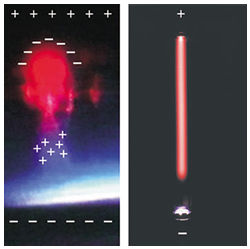
The discharge tube model has been confirmed by many ground-based experiments. But discharge tubes require a power supply to function. Where is the power supply for sprites? Anyone who says that it is powered by the thunderstorm hasn’t understood the question. If we don’t understand how a thunderstorm generates lightning then we have much further to go than is generally admitted by researchers.
Bering writes, “from what is known to date, it may be speculated that sprites or jets, or both, are an integral feature of every thunderstorm system of moderate size or larger in the terrestrial system, and may be an essential element of the earth’s global electrical circuit. Further, it seems likely that they have been a part of thunderstorms that have occurred over previous millions of years or longer. One may speculate about the possible occurrences of similar phenomena associated with lightning on other planets where lightning has been detected, most notably Jupiter and Venus.”
Bering’s speculations are well-founded from the ELECTRIC UNIVERSE® point of view but the stumbling block to further understanding is immediately apparent in the use of the words “earth’s global electrical circuit.” As big as the term “global” sounds, the circuit is too restricted. It is a circuit that assumes heat driven convection in clouds is the global electricity generator. This generator mysteriously separates electric charge in storm clouds to power world-wide currents. However, the circuit is “unplugged.” It is isolated from electrical connection with anything else in the universe. Such a lack of a holistic or cosmic-scale vision is a fundamental constraint on theorists.
In a report on Venusian lightning, following the successful Russian Venera 11 and 12 entry probes, Professor Donald Hunten of the department of Planetary Sciences at the University of Arizona, Tucson, summed up: “The indications are that lightning is likely to occur in any substantial planetary atmosphere. Theories of electrification are faced with the need to explain its presence under a wide variety of circumstances and atmospheric conditions.” There are no water clouds on Venus.

In July 1993 at the Cambridge, U.K., Conference of the Society for Interdisciplinary Studies* I presented a paper about the planet Venus that dealt with reports of lightning. I said:
“The principal difficulty in understanding the origin of lightning is likely to be the assumption that the Earth and Venus are closed electrical systems with no input from the solar plasma environment via the magnetosphere.”
So let us examine the larger picture. There has been one crucial name missing from the earlier list of Nobel Prize winners. He was on the point of being nominated for a Nobel Prize when he died. Kristian Olaf Bernhard Birkeland (1867-1917) was the founder of experimental astrophysics. Note the crucial adjective “experimental” as distinct from modern theoretical astrophysics. He studied under Poincaré and Hertz and was a professor at Oslo University at the age of 31. Wealth and fame accompanied his many achievements in technology and applied physics.
Birkeland was the good guy in a 50-year dispute involving the idea that electrons streaming along magnetic field lines caused the Earth’s auroras. His opponent was the astronomer Sydney Chapman who maintained that the Earth moved through a vacuum. In 1974 space probes found in Birkeland’s favour. Chapman and others then promptly made space plasma superconducting, which relieved them from the complications of dealing with electric fields. Birkeland actually demonstrated his theory long before in an experiment called a “terrella.” It consisted of an electromagnet contained within a sphere and placed in a large vacuum chamber. By initiating an electric discharge in the chamber he was able to reproduce a light show with many of the odd features of auroras. The importance of this simple experiment cannot be overstated because it demonstrates that aurorae and lightning seem to require an electrical power source external to the Earth! That would explain the puzzle raised by Bering: “The charge that produces sprites is not below in the cloud, it’s in the mesosphere itself.”
The ELECTRIC UNIVERSE® model suggests that the Earth plays a cathode role in the Sun’s discharge and therefore is in the business of supplying negative electrons to space and receiving positive ions from the solar wind. It is interesting therefore that the presence of solar wind ions inside the earth’s magnetosphere has puzzled scientists. Thunderstorms are not electricity generators, they are passive elements in an interplanetary circuit, like a self-repairing leaky condenser. The energy stored in the cloud “condenser” is released as lightning when it short-circuits. The short-circuits can occur either within the cloud or across the external resistive paths to Earth or the ionosphere. The charge across the cloud “condenser” gives rise to violent vertical electrical winds within the cloud, not vice versa. By creating a short-circuit to high altitudes in the storm the lightning effectively “throws the switch” connected to the glow discharge “tube” in the upper atmosphere. It then makes perfect sense that the much taller positive cloud-to-ground discharge will be more effective at providing power to the glow discharge than will low-level negative cloud-to-ground lightning because the circuit resistance is lower. Ultimately, lightning on Earth is driven by electric power focused on the Sun but minutely intercepted by the Earth. So lightning on Earth is a pale imitation of what is happening on the Sun.
It is not surprising, therefore, that it took a man who was an electrical researcher, astronomer, and expert on the effects of lightning, Dr. Charles E. R. Bruce of the Electrical Research Association in England, to recognize the fact. That was in 1941! Such is the inertia of science.
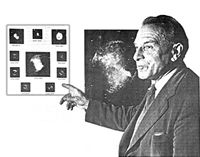
So Bering is right, similar phenomena will be encountered on other planets, but modified by each planet’s environment. And it is quite sobering for historians of science to note that a century ago Birkeland foreshadowed that electrical experiments like the terrella could be done to model other planets, the Sun, and galaxies. He wrote: “experiments were carried out under these conditions for many years. It was in this way that there gradually appeared experimental analogies to various cosmic phenomena, such as zodiacal light, Saturn’s rings, sun spots and spiral nebulae.”
* See http://www.catastrophism.com/cdrom/pubs/journals/review/v1993cam/index.htm
Do we have any proof of interplanetary electric currents?
In the Venus paper mentioned earlier, I wrote:
“The magnetic flux ‘ropes’ of the solar wind, entwined about the planet, are indicative of electric currents flowing directly into the planet’s ionosphere. …Any cosmic body which is charged relative to the surrounding plasma has a plasma sheath or magnetosphere. It is a region in which electric current flows and energy is released. The sheath is generally invisible unless the current is strong enough to generate light, such as on the Sun and in the coma and tails of comets.”
Four years later in a news item, “Planet’s tail of the unexpected” on 31 May 97, New Scientist reporter, Jeff Hecht, wrote:
“One of our neighboring planets can still pack a few surprises, it seems. Using satellite data, an international team of researchers has found that Venus sports a giant, ion-packed tail that stretches almost far enough to tickle the Earth when the two planets are in line with the Sun. ‘I didn’t expect to find it,’ says team member Marcia Neugebauer of the Jet Propulsion Laboratory in Pasadena, California. ‘It’s a really strong signal, and there’s no doubt it’s real.’
NASA’s Pioneer Venus Orbiter first found the tail in the late 1970’s. Around 70,000 kilometres from the planet, the spacecraft detected bursts of hot, energetic ions, or plasma. But now Europe’s Solar and Heliospheric Observatory (SOHO), a project partly sponsored by NASA, has shown that the tail stretches some 45 million kilometres into space, more than 600 times as far as anyone realized. This satellite, which sits about 1.5 million kilometres away from the Earth, passed through the tail last July, when it was roughly in line with Venus and the Sun. Neugebauer suspects the tail is ‘a lot of little stringy things‘ like those of some comets, which can have several ion tails. If so, says Neugebauer, ‘the theorists are going to have fun trying to explain why they’re as narrow as we saw them’. Standard physics says that narrow plasma streams are unstable and should dissipate fast. No one can yet explain how they hold together over tens of millions of kilometres. This surprise has since been repeated for comet Hyakutake with its tail stretching half a billion kilometres across the solar system!
No one can explain ‘stringy things’ in space?
Birkeland’s name has been given to an electrical phenomenon very important in space plasma. He found that electric currents move through space largely by means of electrons spiraling along magnetic field lines. Such a plasma current is known as a “Birkeland current“. When two Birkeland currents are parallel they experience a long range attractive force that brings them closer together, or pinches them. When they get very close, a short range repulsive force holds them apart so that they maintain their identity. The result is that separate Birkeland current filaments come together to form pairs and the pairs form a twisted, filamentary “rope” of electric current in space. Plasma physicists have shown that Birkeland currents can remain coherent even over vast intergalactic distances.
The prescient Birkeland again:
“According to our manner of looking at the matter, every star in the universe would be the seat and field of activity of electric forces of a strength that no one could imagine. We have no certain opinion as to how the assumed enormous electric currents with enormous tension are produced, but it is certainly not in accordance with the principles we employ in technics on the earth at the present time. One may well believe, however, that a knowledge in the future of the electrotechnics of the heavens would be of great practical value to our electrical engineers. It seems to be a natural consequence of our points of view to assume that the whole of space is filled with electrons and flying electric ions of all kinds. We have assumed that each stellar system in evolutions throws off electric corpuscles into space.”
Birkeland was right. The “stringy things” that puzzled astronomers are proof positive of electric currents in plasma. Venus-and Jupiter, the archetypal god of thunder,-are part of an electric circuit that involves the Sun. The Sun is part of a circuit that involves the entire galaxy. The Earth with its own Langmuir sheath (misnamed magnetosphere) is wired in to the same power grid. This raises a serious question about the study of weather and climatology because a crucial energy input to the Earth is unrecognized. If that is so then predictions about the Earth’s climate are presently worthless because they ignore the largest single influence on Earth’s weather. This oversight may explain why scientists are having difficulties explaining weather systems on other planets too. Jupiter, for instance, is known to be the source of intense electromagnetic activity. That energy is thought to be derived from Jupiter’s rotation-in other words Jupiter is a giant electrical generator. If so, it should be expected that the equator is being ‘braked’ in the process. What do we find? The equator is spinning fastest of all! Jupiter is an electric motor, not a generator. Enormous power is being intercepted by its vast Langmuir sheath, lighting up the moon, Io, with cathode arcs, on its way to Jupiter. This simple electrical model also explains why the fastest winds in the solar system, 1000 mph, are found on Neptune, the most distant planet from the Sun. And it explains the enigmatic “spokes” in Saturn’s rings.
Bering notes that short duration (~1 ms) gamma ray (>1 MeV) bursts of terrestrial origin have been detected by the Compton Gamma Ray Observatory over thunderstorm regions, and their source is believed to lie at altitudes greater than 30 km. X-rays and gamma-rays are hallmarks of high-energy electric discharge processes. An external source delivering power through an atmosphere that is increasing in density downwards, can be expected to give rise to the highest energy radiation at the top of the atmosphere or at the footprints of arcs on the surface (lightning). It is a situation we see on the Sun where the hardest radiation comes from high above the photosphere, except when an arc touches down and a solar flare results. The electrical model may be extended to all bodies in an ELECTRIC UNIVERSE®.
So, as in The Fellowship of the Ring, Bering’s “Dark Rider” didn’t find what it was looking for. The secret for the wizards of science is to let die their ancient myths of an electrically sterile universe. Then the future may be theirs to foretell. It requires no magic.
If Tolkien will forgive me,
There is one power to rule them all
and in the darkness, light them
– ELECTRICITY
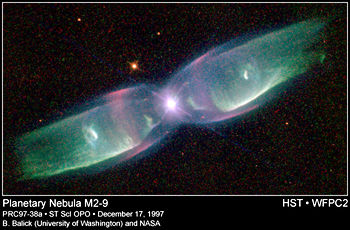
An interesting footnote to lightning on Venus:
It is known that lightning backscatters microwaves at wavelengths of a few centimetres. One of the most puzzling discoveries by the Magellan Venus Orbiter was that all high terrain on Venus reflected radar signals as if it were coated by metal. I explained this phenomenon several years ago as being due to a glow discharge in a dense plasma. It is the most prevalent form of lightning on Venus because that planet doesn’t have clouds like the Earth to provide a convenient path to ground for cosmic electric power. Without clouds on Earth we too would have glowing mountain tops and destructive super-bolts from a blue sky. The Galileo spacecraft detected super-bolts on Venus.
What is a sprite?
Sprites are colossal towers of red and blue light, 10 kilometres or more across, usually climbing up to 30 kilometres from a starting height of about 50 kilometres, well above the storm. They glow for only a few thousandths of a second, which makes them difficult to see and record. Most importantly they seem to be triggered by lightning flashes in storms far below.
Although we are all familiar with the story of vertical movements of water droplets in storm clouds giving rise to lightning, the truth is that it is not known what causes a thunderstorm. Somehow negative charges collect at the bottom of a cloud and positive charges at the top. Eventually the intensity of the electric field between cloud and ground causes electrical breakdown of the air. The freed electrons are accelerated by the field toward the ground in the form of sinuous “stepped leaders.” This is a weakly luminous process. On reaching the ground a conductive channel is now available between the ground and the cloud. The result is the brilliant arc of the “return stroke” – a bolt of lightning.
The simplest and smallest sprites are single vertical columns named C sprites. Large collections of C sprites resemble a mammoth fireworks display. A subset of the sprites with tendrils–often the largest and most energetic–also exhibit upward branching toward the ionosphere, and are named carrots. Very large sprites with diffuse tops and lower tendrils extending down to altitudes of 30-40 km have been dubbed angels, jellyfish, and A-bombs. With maximum vertical extents exceeding 60 km, these giant sprites extend vertically three times farther than the largest thunderstorms.
Long-lived species may also be present at lower altitudes-in the long tendrils that stretch down below the sprite’s body to the cloud tops like the tentacles of an octopus. These tendrils light up with bright, spherical “beads” which on some occasions outlive the main sprite, lasting up to a hundred milliseconds in some cases, and can even momentarily flare up long after the sprite body has faded. “Such bright spots give the impression of embers in a dying fire,” says Stenbaek-Nielsen, from the Geophysical Institute of the University of Alaska.
A good web page is: http://lightning.nmt.edu/sprites/sprites.html
What is an elve?
Elves are shaped quite differently from sprites and were first identified in 1990 as brief brightenings of the airglow layer in space shuttle imagery. The ringlike elve in Figure 1 (not “elf”: the acronym stands for “emissions of light and very low frequency perturbations from electromagnetically pulsed (EMP) sources”) is centered on the vertical channel to ground. It is a rapidly expanding ring of luminosity in a narrow altitude range (85-95Êkm). For an observer on the ground, the flash appears to drop in altitude and spread outward with time. While the optical flash may last only tens of microseconds, light is emitted from different regions for 1Êmillisecond as the EMP propagates radially outward.
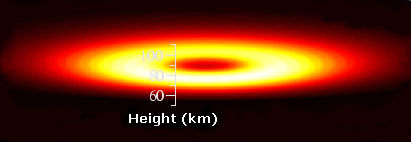
What is a gnome?
“We’re seeing things we’ve never seen before on top of active storms-electrical discharges coming out the top of clouds that could be a new form of lightning,” says Walter Lyons of the Yucca Ridge Field Station, Colorado. They have tentatively been christened gnomes. “They look like fingers of light going straight up out of the cloud but at rather slow speed. It looks like lightning in pictures but takes over a second or two to happen.” Could gnomes be more energetic than sprites? “I wouldn’t volunteer to sit in one,” says Lyons. “Sprites have tremendous amounts of energy spread over a great volume. We’ve got no idea how much energy is in a gnome, but it’s compressed into a smaller area.” —
